REPORT

‘Here, No Balloon’ by Yuki Onodera is situated in an exhibition space arranged slightly differently than in previous shows held in RICOH ART GALLERY. Visitors are greeted by a series of seven new pieces at the entrance: silver gelatin prints of landscapes on canvas, collaged with strange forms in yellow produced by StareReap2.5 . The most notable feature is their size, with their long edges measuring about 2 meters. The seven images, bigger than the bodies of the viewers, are lined in a panoramic arrangement along the circular space of the gallery, drawing the viewers into a strange world of images.
Onodera explains these new pieces: “It was an old photograph I happened to see that triggered them.” This photograph from the early 1900s, of a square in Porte des Ternes, Paris, was of a bronze sculpture that depicted an impressive hot air balloon . Onodera has lived in Paris for a long time, but had never seen the statue before. Her research showed that it was melted in 1941 under the German occupation, so it is no longer in existence. The ideas of an ‘absent thing’, and of ‘something melted to become something else’ resonated with Onodera, and she photographed the square where the statue had once stood with a film camera. She had the idea of merging ‘an image of something that was melted and lost’ with StareReap2.5 in those monochrome photographs.
Onodera explains these new pieces: “It was an old photograph I happened to see that triggered them.” This photograph from the early 1900s, of a square in Porte des Ternes, Paris, was of a bronze sculpture that depicted an impressive hot air balloon . Onodera has lived in Paris for a long time, but had never seen the statue before. Her research showed that it was melted in 1941 under the German occupation, so it is no longer in existence. The ideas of an ‘absent thing’, and of ‘something melted to become something else’ resonated with Onodera, and she photographed the square where the statue had once stood with a film camera. She had the idea of merging ‘an image of something that was melted and lost’ with StareReap2.5 in those monochrome photographs.
‘Here, No Balloon’ by Yuki Onodera is situated in an exhibition space arranged slightly differently than in previous shows held in RICOH ART GALLERY. Visitors are greeted by a series of seven new pieces at the entrance: silver gelatin prints of landscapes on canvas, collaged with strange forms in yellow produced by StareReap2.5 . The most notable feature is their size, with their long edges measuring about 2 meters. The seven images, bigger than the bodies of the viewers, are lined in a panoramic arrangement along the circular space of the gallery, drawing the viewers into a strange world of images.
Onodera explains these new pieces: “It was an old photograph I happened to see that triggered them.” This photograph from the early 1900s, of a square in Porte des Ternes, Paris, was of a bronze sculpture that depicted an impressive hot air balloon . Onodera has lived in Paris for a long time, but had never seen the statue before. Her research showed that it was melted in 1941 under the German occupation, so it is no longer in existence. The ideas of an ‘absent thing’, and of ‘something melted to become something else’ resonated with Onodera, and she photographed the square where the statue had once stood with a film camera. She had the idea of merging ‘an image of something that was melted and lost’ with StareReap2.5 in those monochrome photographs.
Onodera explains these new pieces: “It was an old photograph I happened to see that triggered them.” This photograph from the early 1900s, of a square in Porte des Ternes, Paris, was of a bronze sculpture that depicted an impressive hot air balloon . Onodera has lived in Paris for a long time, but had never seen the statue before. Her research showed that it was melted in 1941 under the German occupation, so it is no longer in existence. The ideas of an ‘absent thing’, and of ‘something melted to become something else’ resonated with Onodera, and she photographed the square where the statue had once stood with a film camera. She had the idea of merging ‘an image of something that was melted and lost’ with StareReap2.5 in those monochrome photographs.
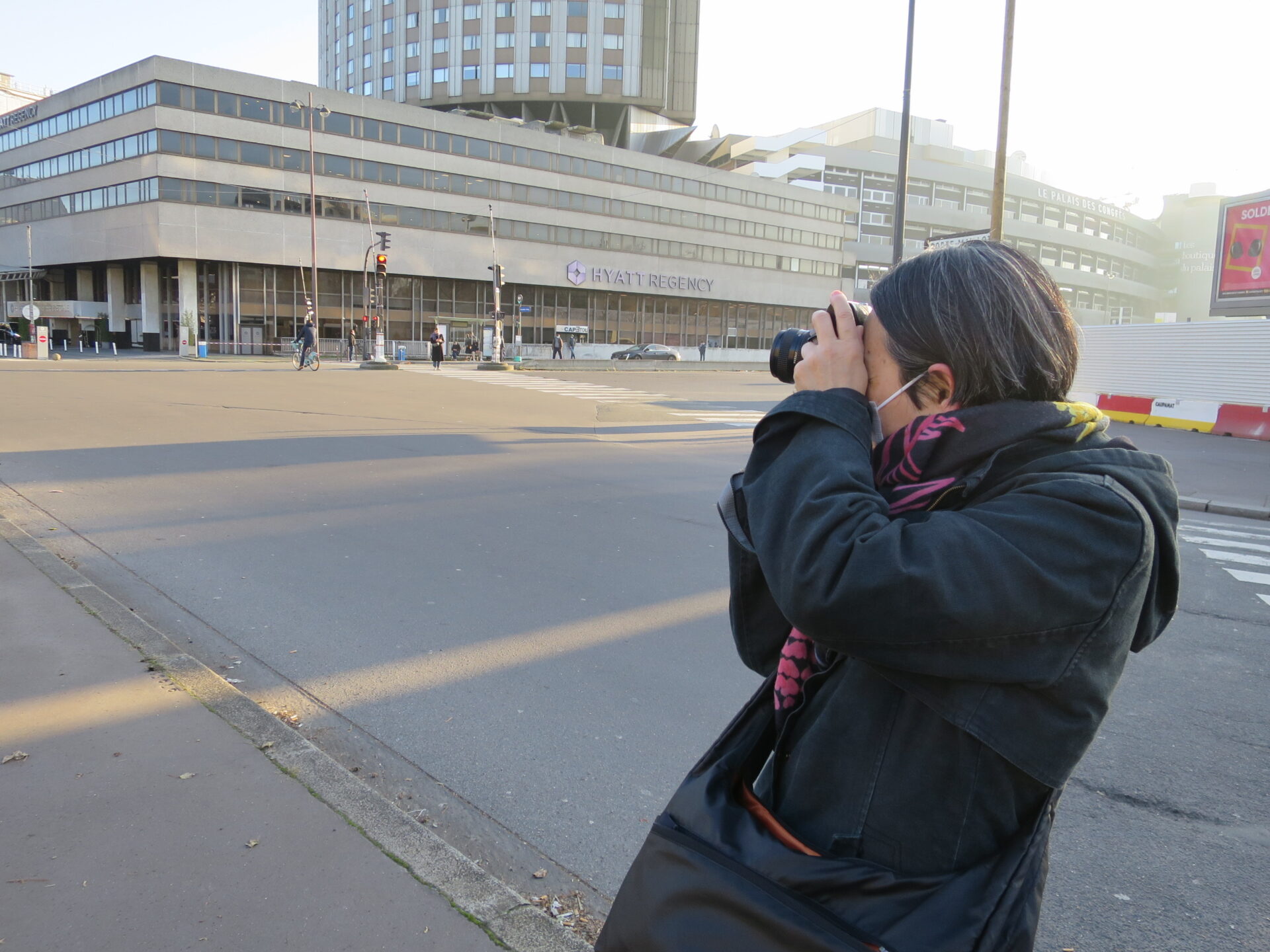
The source of the yellow images representing something ‘melted and lost’ is a photograph that Onodera shot after an object she had created herself was melted by heat. “In the process of melting something, a form appears. One of the points of the production of these pieces is to incorporate this uncontrolled form, which is distinct from sculpture. I was careful that the additional elements were not simple collage, so they didn’t look like an applique patched on when they were placed on the photograph. For example, I transplanted images of droplets of liquid into the yellow elements to construct the ‘melted form.’ Or, I bluntly cut the point where the melted part was dripping, intentionally leaving sections that are obviously digitally processed. I wanted to create something that, at first glance, is neither college nor inkjet or silk-screen print – something that makes you wonder what it is.”
The source of the yellow images representing something ‘melted and lost’ is a photograph that Onodera shot after an object she had created herself was melted by heat. “In the process of melting something, a form appears. One of the points of the production of these pieces is to incorporate this uncontrolled form, which is distinct from sculpture. I was careful that the additional elements were not simple collage, so they didn’t look like an applique patched on when they were placed on the photograph. For example, I transplanted images of droplets of liquid into the yellow elements to construct the ‘melted form.’ Or, I bluntly cut the point where the melted part was dripping, intentionally leaving sections that are obviously digitally processed. I wanted to create something that, at first glance, is neither college nor inkjet or silk-screen print – something that makes you wonder what it is.”
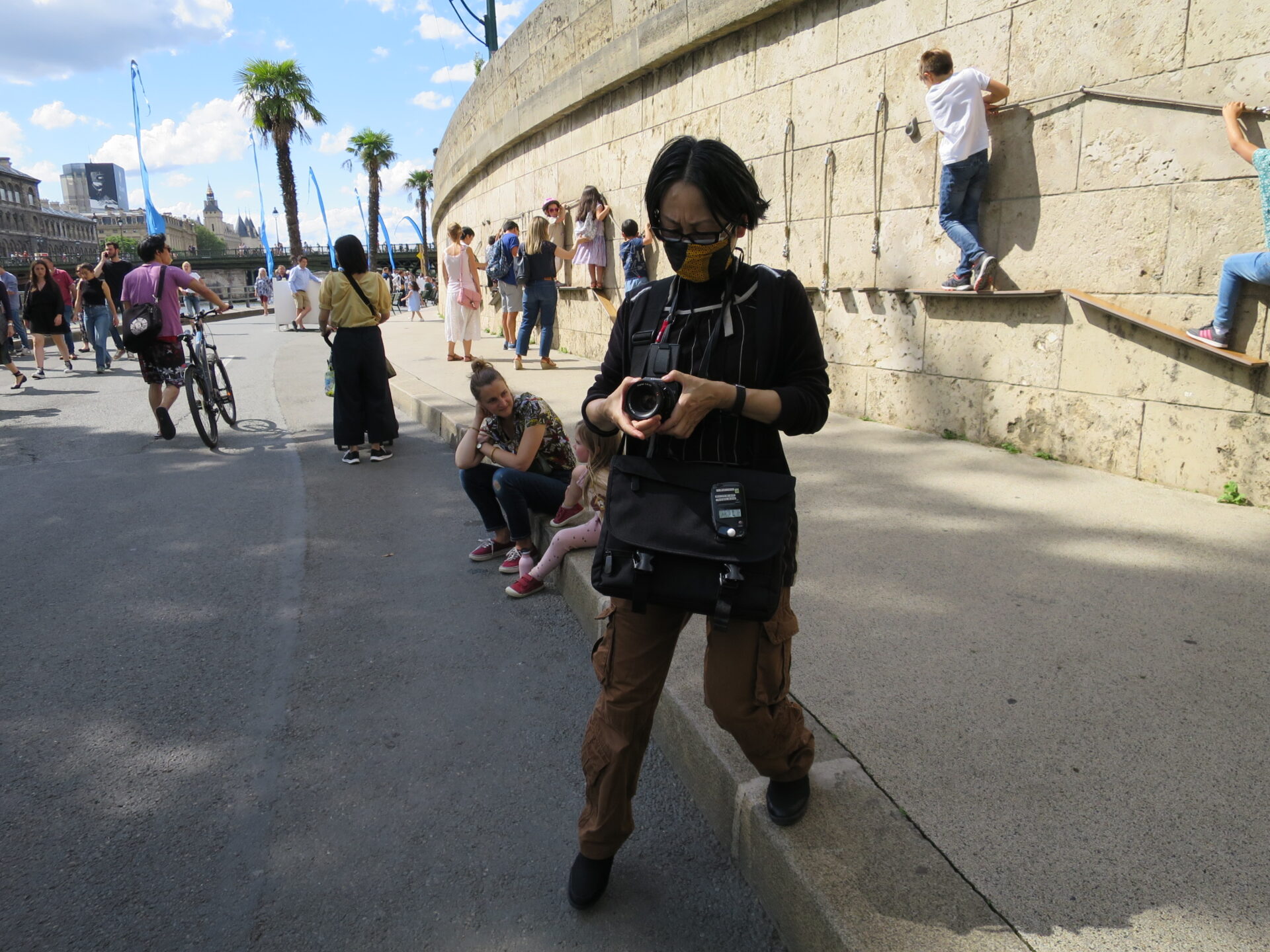
Onodera’s work contains some pieces that were inspired by past incidents or legends. One example of this is a series entitled ‘Going Under Orpheus’, which won the Niépce Prize, the most prestigious photographic award in France. It is a series that drew its origin from the case of a disappearance in a Madrid hotel. “It is true that in my creation I have always been intrigued by how an image, neither fantasy nor reality, is built through the combination of fiction and non-fiction. I think this is one of the natures of photography, and I would be very happy if it was something people could see in my work.”
Onodera’s work contains some pieces that were inspired by past incidents or legends. One example of this is a series entitled ‘Going Under Orpheus’, which won the Niépce Prize, the most prestigious photographic award in France. It is a series that drew its origin from the case of a disappearance in a Madrid hotel. “It is true that in my creation I have always been intrigued by how an image, neither fantasy nor reality, is built through the combination of fiction and non-fiction. I think this is one of the natures of photography, and I would be very happy if it was something people could see in my work.”
This exhibition features some past works that Onodera selected. On the 8th floor she exhibits the ‘Eleventh Finger’ series, with some new pieces. “This is a series of work where I take sneak shots of anonymous people on the street, and hide their faces using the technique of photogram. In other words, it is a series that hides what is ‘present’. And ‘Balloon’ can be seen as a revelation of what is ‘absent’. I wanted to use this exhibition to show the comparison of these two concepts, as if the positive and negative are reversed in each other, along with the contrast of the pure photographic of the silver gelatin prints of ‘Eleventh Finger’, and the new technology of ‘Here, No Balloon’ .
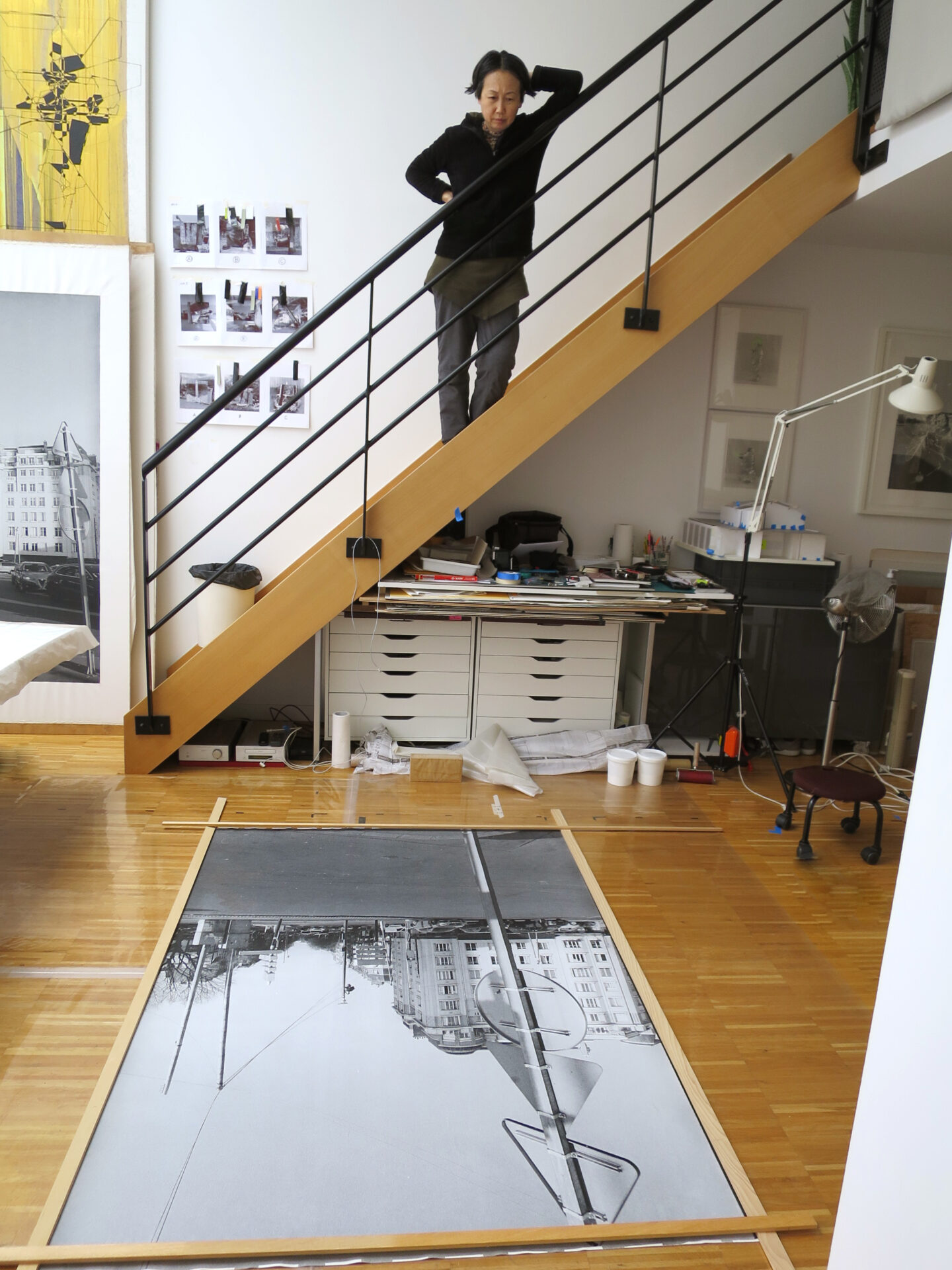
This exhibition features some past works that Onodera selected. On the 8th floor she exhibits the ‘Eleventh Finger’ series, with some new pieces. “This is a series of work where I take sneak shots of anonymous people on the street, and hide their faces using the technique of photogram. In other words, it is a series that hides what is ‘present’. And ‘Balloon’ can be seen as a revelation of what is ‘absent’. I wanted to use this exhibition to show the comparison of these two concepts, as if the positive and negative are reversed in each other, along with the contrast of the pure photographic of the silver gelatin prints of ‘Eleventh Finger’, and the new technology of ‘Here, No Balloon’ .
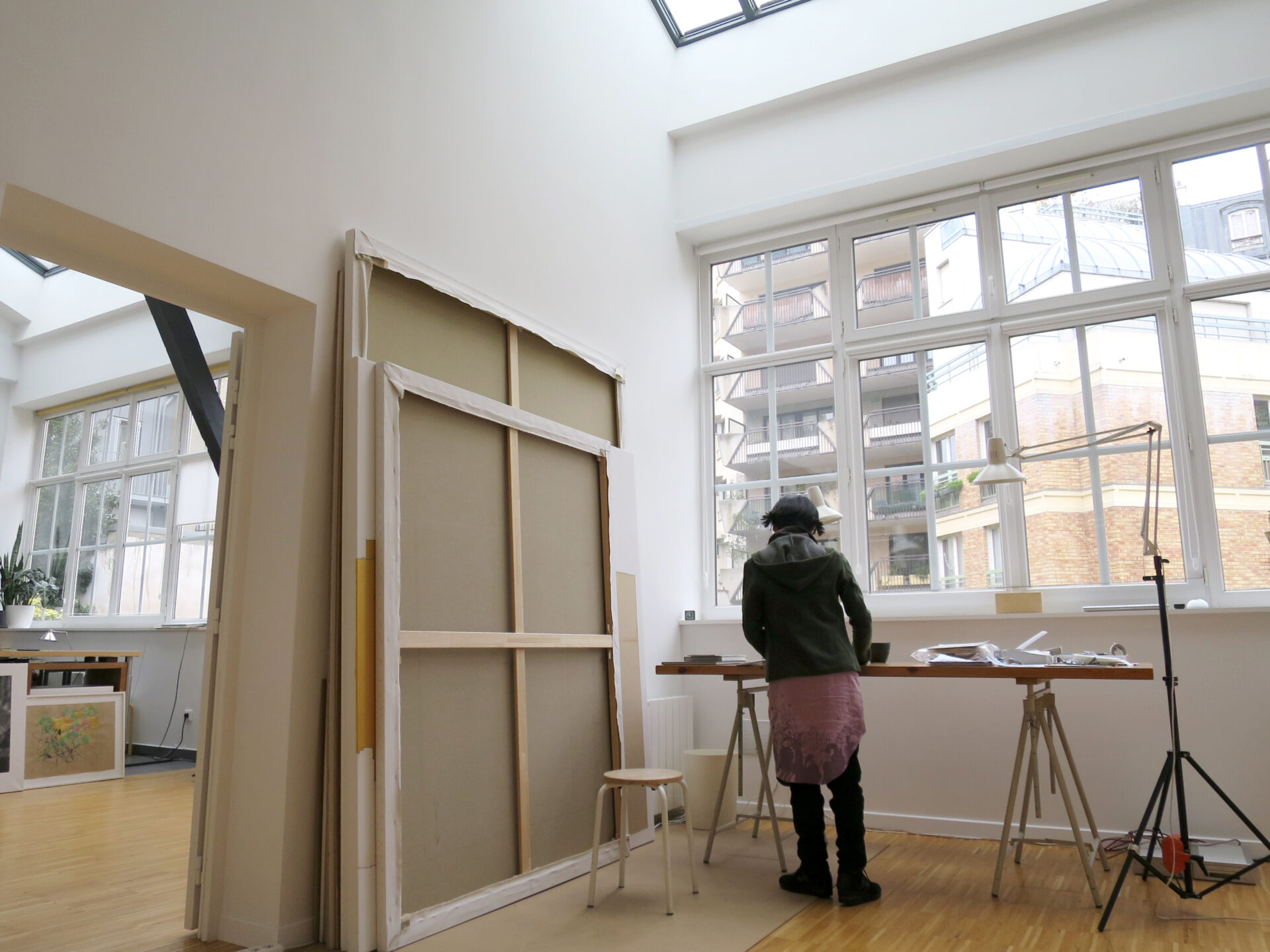
Onodera has focused on ‘photography with hand-craft’ in her work, such as photo-collage, or experimenting with a marble ball placed inside her camera. When asked about the technical attraction of StareReap2.5 she explained, “I thought it was something that was, in a way, the polar opposite of the direction I have been traveling in my creation. Yes, you can achieve expression that is three-dimensional and materialistic, but it is something different from expression with a sense of physicality, like a painter layering paint. It is in some way industrial – that is the characteristic of the technology, and it is also an attraction. It is the reason I saw the potential to create something new that is neither art in a conventional sense, nor hand-craft.”
Onodera has focused on ‘photography with hand-craft’ in her work, such as photo-collage, or experimenting with a marble ball placed inside her camera. When asked about the technical attraction of StareReap2.5 she explained, “I thought it was something that was, in a way, the polar opposite of the direction I have been traveling in my creation. Yes, you can achieve expression that is three-dimensional and materialistic, but it is something different from expression with a sense of physicality, like a painter layering paint. It is in some way industrial – that is the characteristic of the technology, and it is also an attraction. It is the reason I saw the potential to create something new that is neither art in a conventional sense, nor hand-craft.”
Yuki Onodera
Born in Tokyo in 1962. Onodera began her artistic career in Paris in 1993. She has produced many experimental pieces and series of work unbound by the conventions of photography, including production of work with a marble inside her camera, as well as work based on stories developed from incidents and legends for which she traveled across the world. She uses every possible idea to explore the questions “what is photography?” and “what can we do with photography?” Her work has been acquired by various museums around the world, including the Pompidou Center, as well as the San Francisco Museum of Modern Art, the J. Paul Getty Museum, the Shanghai Art Museum, the Tokyo Photographic Art Museum, and the Tokyo National Museum of Modern Arts.
Born in Tokyo in 1962. Onodera began her artistic career in Paris in 1993. She has produced many experimental pieces and series of work unbound by the conventions of photography, including production of work with a marble inside her camera, as well as work based on stories developed from incidents and legends for which she traveled across the world. She uses every possible idea to explore the questions “what is photography?” and “what can we do with photography?” Her work has been acquired by various museums around the world, including the Pompidou Center, as well as the San Francisco Museum of Modern Art, the J. Paul Getty Museum, the Shanghai Art Museum, the Tokyo Photographic Art Museum, and the Tokyo National Museum of Modern Arts.
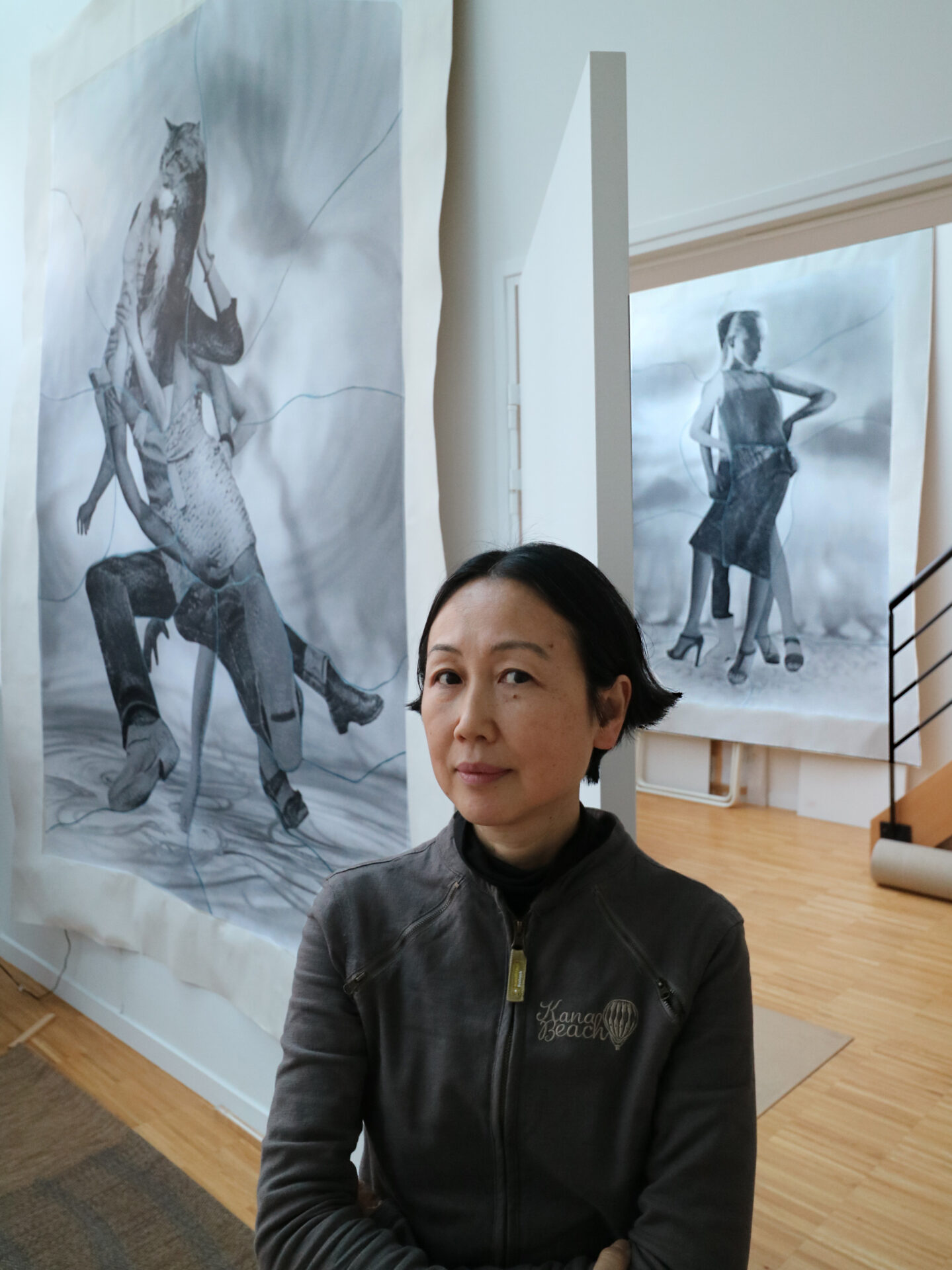
Yuki Onodera
Born in Tokyo in 1962. Onodera began her artistic career in Paris in 1993. She has produced many experimental pieces and series of work unbound by the conventions of photography, including production of work with a marble inside her camera, as well as work based on stories developed from incidents and legends for which she traveled across the world. She uses every possible idea to explore the questions “what is photography?” and “what can we do with photography?” Her work has been acquired by various museums around the world, including the Pompidou Center, as well as the San Francisco Museum of Modern Art, the J. Paul Getty Museum, the Shanghai Art Museum, the Tokyo Photographic Art Museum, and the Tokyo National Museum of Modern Arts.
Born in Tokyo in 1962. Onodera began her artistic career in Paris in 1993. She has produced many experimental pieces and series of work unbound by the conventions of photography, including production of work with a marble inside her camera, as well as work based on stories developed from incidents and legends for which she traveled across the world. She uses every possible idea to explore the questions “what is photography?” and “what can we do with photography?” Her work has been acquired by various museums around the world, including the Pompidou Center, as well as the San Francisco Museum of Modern Art, the J. Paul Getty Museum, the Shanghai Art Museum, the Tokyo Photographic Art Museum, and the Tokyo National Museum of Modern Arts.
